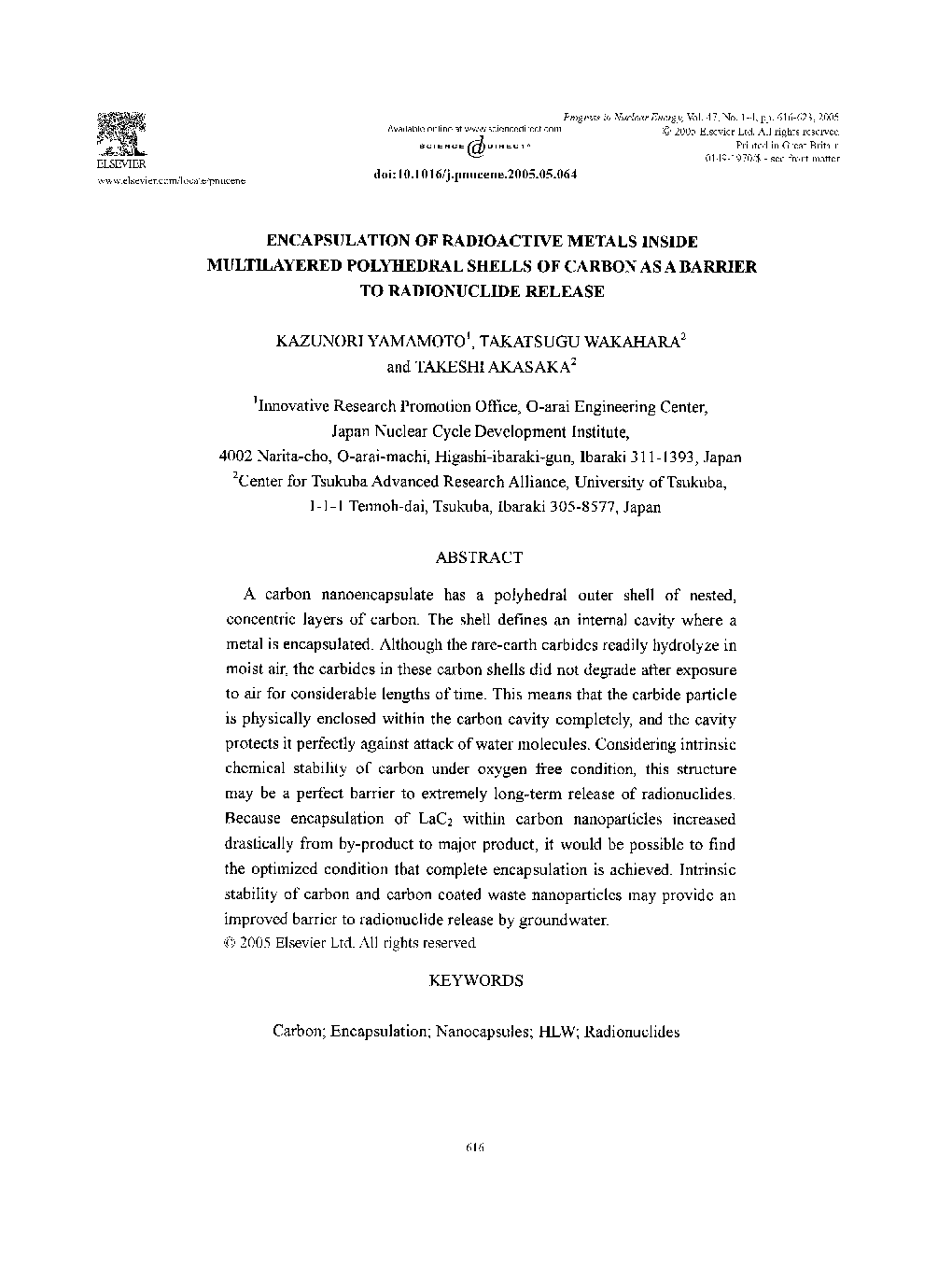| Article ID | Journal | Published Year | Pages | File Type |
|---|---|---|---|---|
| 9825447 | Progress in Nuclear Energy | 2005 | 8 Pages |
Abstract
A carbon nanoencapsulate has a polyhedral outer shell of nested, concentric layers of carbon. The shell defines an internal cavity where a metal is encapsulated. Although the rare-earth carbides readily hydrolyze in moist air, the carbides in these carbon shells did not degrade after exposure to air for considerable lengths of time. This means that the carbide particle is physically enclosed within the carbon cavity completely, and the cavity protects it perfectly against attack of water molecules. Considering intrinsic chemical stability of carbon under oxygen free condition, this structure may be a perfect barrier to extremely long-term release of radionuclides. Because encapsulation of LaC2 within carbon nanoparticles increased drastically from by-product to major product, it would be possible to find the optimized condition that complete encapsulation is achieved. Intrinsic stability of carbon and carbon coated waste nanoparticles may provide an improved barrier to radionuclide release by groundwater.
Related Topics
Physical Sciences and Engineering
Energy
Energy Engineering and Power Technology
Authors
Kazunori Yamamoto, Takatsugu Wakahara, Takeshi Akasaka,
